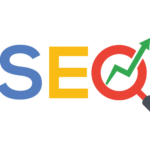The domain of publishing has undergone a radical transformation over the last decade, spurred by the advent and evolution of digital platforms. What was once a field dominated by traditional print mediums has now burgeoned into a diverse digital ecosystem. This metamorphosis has not only propelled the publishing industry into a new epoch but also made it more accessible to a broader spectrum of authors and readers alike. Today’s digital platforms are repositories of interactive and dynamic content, breaking the barriers posed by geographical and logistical constraints. They are democratizing the dissemination of information, rendering a global platform for aspiring authors, established publishers, and curious readers. The shift from print to digital has not only broadened the horizon for content creation and distribution but also ushered in a suite of tools and features that enhance user engagement and understanding.
The Evolution of Digital Publishing
The trajectory from print to digital publishing is a testament to the relentless march of technology. Initially, digital publishing was merely seen as a complement to its print counterpart. However, as technology advanced, digital platforms began offering unparalleled advantages such as real-time updates, interactive content, and global distribution at a click. The ability to embed multimedia, hyperlink references, and offer interactive forums transformed the static nature of traditional publishing into a dynamic, engaging experience. Additionally, digital platforms provided a fertile ground for innovation, introducing features like Augmented Reality (AR) and Virtual Reality (VR) in publishing, further enriching the user experience. The evolution is ongoing, with new tools and technologies continually broadening the scope and capabilities of digital publishing, rendering it an indispensable part of the modern information dissemination ecosystem.
Accessibility and Reach
Digital platforms have notably obliterated many barriers that once impeded the publishing arena. Unlike traditional publishing, which often entailed a tedious process of approvals and significant upfront costs, digital platforms provide almost instant access to a global audience. They have democratized the publishing landscape, allowing anyone with a story to tell or knowledge to share the opportunity to publish their work. Furthermore, the global reach of digital platforms has dramatically expanded the audience base, enabling content to traverse borders and reach readers irrespective of their geographical location. This inclusivity and reach are not only fostering a rich diversity of content but also creating a more informed and connected global community. Through digital platforms, the essence of publishing transcends beyond the physical limitations, heralding an era of unrestricted access to knowledge and information.
Interactive Content
In an era where capturing audience attention is paramount, interactive content has emerged as a linchpin in the digital publishing arena. Digital platforms enable the creation and dissemination of interactive content, taking reader engagement to new heights. One of the remarkable forms of interactive content is flipbooks, which seamlessly blend the tactile satisfaction of flipping pages with the digital advantages of multimedia integration. With flipbooks, publishers can embed videos, animations, and audio clips within the pages, creating a rich, multimedia reading experience that resonates with the digital-savvy audience. Furthermore, interactive elements like hyperlinks, clickable infographics, and interactive quizzes make content more engaging and informative. This level of interaction not only enriches the reader’s experience but also fosters a deeper understanding and retention of the content. The digital realm, with its plethora of interactive tools, is transforming the conventional reading experience into a dynamic interaction, where content is no longer static but a vibrant entity engaging readers in a multidimensional discourse.
Analytics Integration
The integration of analytics in digital publishing platforms is a game-changer for publishers and authors. It provides a data-driven lens to understand reader behavior, engagement levels, and the overall performance of the published content. Unlike traditional publishing, where gauging reader engagement was a nebulous endeavor, digital platforms offer precise analytics that unveil a wealth of information. Metrics such as page views, time spent on page, click-through rates, and social shares provide invaluable insights into the content’s effectiveness and areas for improvement. Moreover, real-time feedback allows for agile adjustments to content strategy, optimizing for better engagement and broader reach. Analytics also play a pivotal role in monetization strategies, helping publishers identify the most engaging content and advertising opportunities. The confluence of publishing and analytics has paved the way for a more informed, strategic approach to content creation and distribution, ensuring that the digital publishing ecosystem continues to evolve in alignment with reader preferences and behaviors.
Cost-Efficiency
The financial dynamics of publishing have been significantly altered with the advent of digital platforms. Traditional publishing entails various costs including printing, distribution, and storage, which often pose substantial barriers for aspiring authors and small publishers. Digital publishing, on the other hand, substantially mitigates these expenses, making the process more cost-efficient and accessible. The absence of physical production costs means that the financial threshold for publishing is dramatically lowered. Moreover, digital platforms often offer scalable pricing models that can accommodate the budgetary constraints of different publishers. Additionally, the direct distribution to readers through digital channels eradicates the need for intermediaries, further reducing the overall cost and ensuring a larger share of revenue for authors and publishers. This cost-efficiency extends to readers as well, who can access digital content at competitive prices, often benefiting from discounts and bundled offerings that digital platforms can provide due to their lower operational costs.
Eco-Friendly Solutions
Transitioning from print to digital publishing is not only a boon for cost-efficiency but also a stride toward environmental responsibility. The traditional publishing model entails a significant environmental impact, with the consumption of paper contributing to deforestation, and the physical distribution of books generating a substantial carbon footprint. Digital publishing platforms provide an eco-friendlier alternative by eliminating the need for paper and reducing the carbon emissions associated with transportation and storage. Moreover, digital platforms offer the possibility of reaching a global audience without the environmental cost of shipping and logistics. Besides the direct environmental benefits, digital publishing also fosters a culture of sustainability among readers and publishers. It advocates for a shift in consumer behavior towards more sustainable practices, showcasing how technological advancements in the publishing industry can play a pivotal role in reducing the environmental impact and driving a more sustainable future for both the industry and the planet.
SEO and Online Visibility
The digital publishing realm offers a unique advantage in terms of Search Engine Optimization (SEO) and online visibility, which is critical in the crowded digital space. Unlike traditional publishing, digital platforms provide the opportunity to optimize content for search engines, making it easier for potential readers to discover. By incorporating relevant keywords, meta descriptions, and optimized images, publishers can significantly enhance the online visibility of their content. Additionally, digital publishing platforms often come with built-in SEO tools and guidance, assisting publishers in maximizing their reach. The interlinking of content, both within the digital platform and with external sites, further augments online visibility and drives more traffic. Moreover, the ability to share content easily on social media and other online channels amplifies the reach, bringing a larger audience to the published content.
Final Thoughts
The narrative of publishing has been re-written with the infusion of digital platforms, leading to an enriched, accessible, and sustainable publishing ecosystem. These platforms have redefined what it means to publish and access content in the modern era, bringing about a revolution that extends far beyond just the conversion of physical pages into digital format. They have democratized publishing, made it more interactive, and created avenues for insightful analytics, while also presenting a cost-effective and environmentally responsible choice. As the digital publishing landscape continues to evolve, it beckons publishers, authors, and readers to embrace the myriad opportunities it unfolds.







